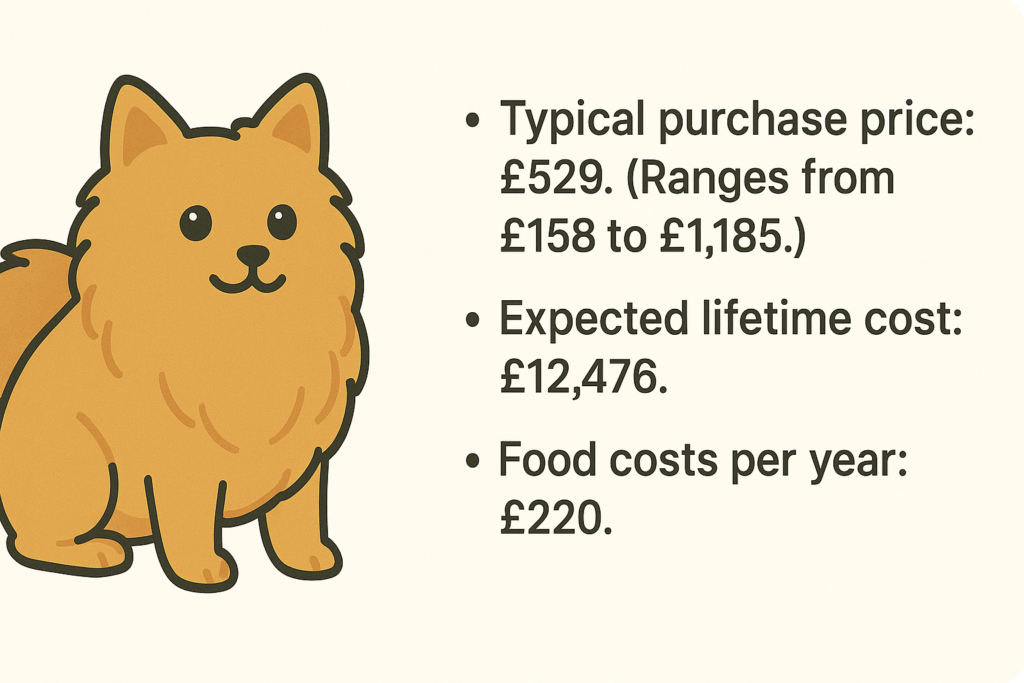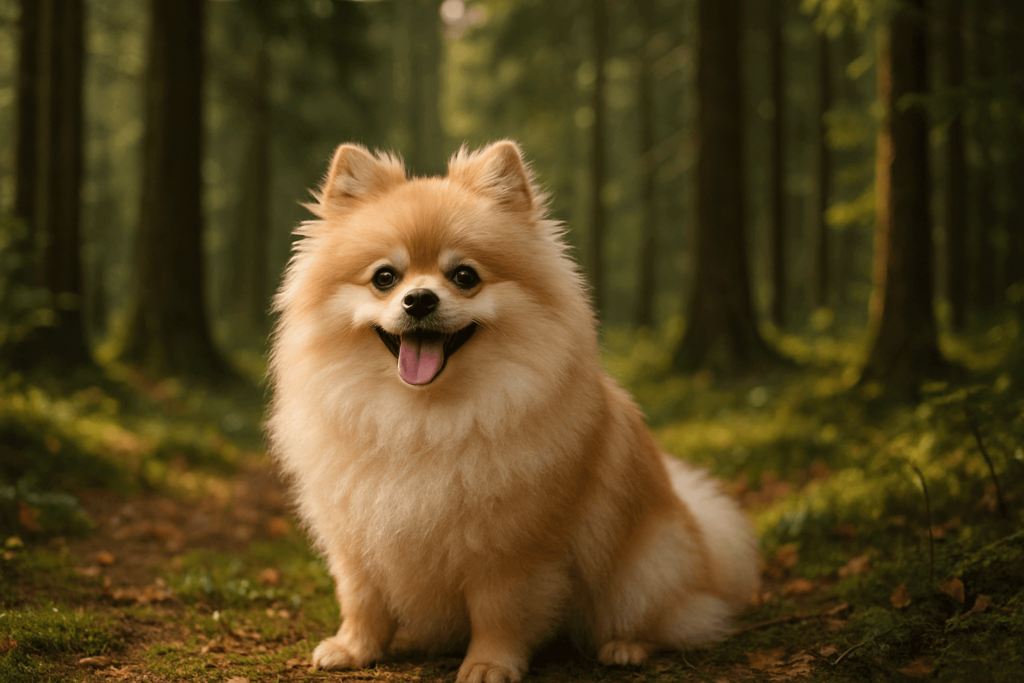
Physical attributes
- Height: ranges from 25cm / 8 inches up to 30cm / 12 inches.
- Weight: ranges from 1kg / 3lbs up to 3kg / 7lbs.
- Typical fur colours: various colours.
- Eye colour: brown.
- Size category: small.
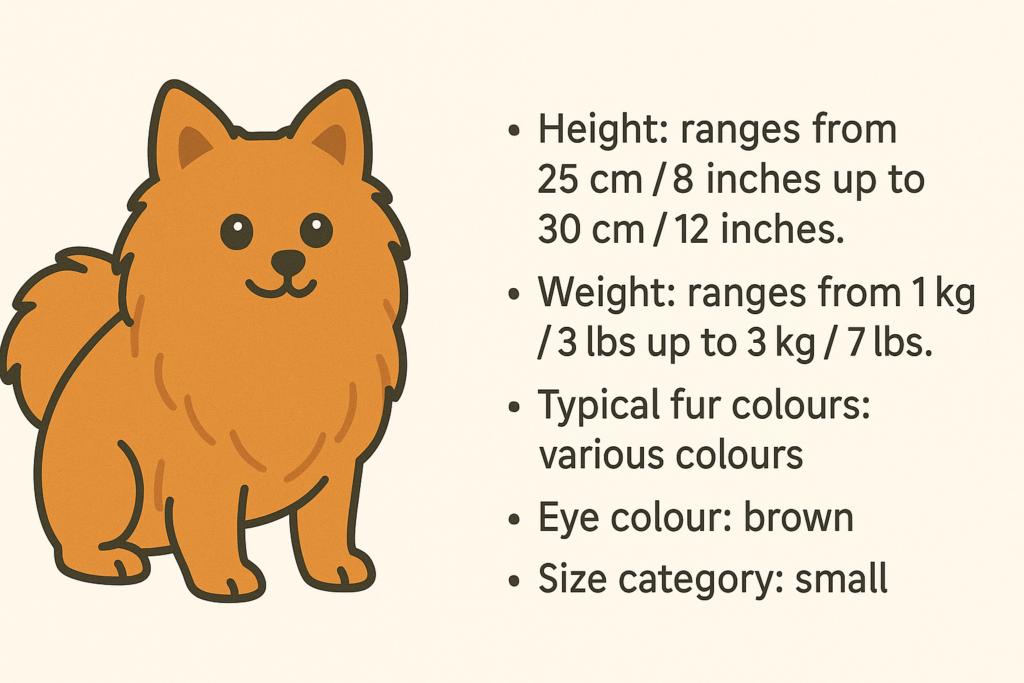
Health attributes
- Common health problems: dental problems, patellar luxation and tracheal collapse.
- Usual longevity: 12 to 16 years.
- Hypoallergenic? No.
Pomeranian breed fulfilment and exercise needs
Keeping a Pomeranian happy and fulfilled isn’t rocket science, but these adorable fluffballs do need the right mix of activities to thrive. These pint-sized pups typically need between 45 minutes to an hour of exercise daily, which is pretty manageable for most pet parents.
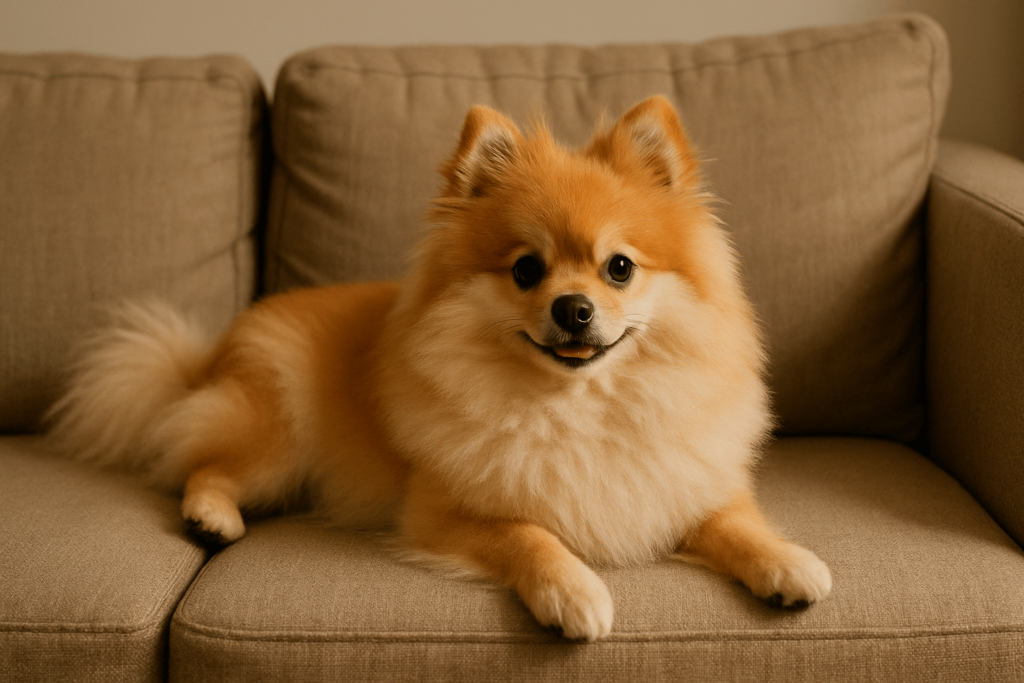
Exercise and Activity Needs
While Poms aren’t high-energy athletes like some working breeds, they still need moderate exercise to stay healthy and content. A daily routine of short walks, combined with playtime, hits the sweet spot for these compact companions. Their exercise requirements are what you’d expect from a small breed – not too demanding, but enough to keep them from bouncing off the walls!
Enrichment Activities That Really Shine
These clever little dogs absolutely shine when it comes to mental stimulation. Trick training is a perfect match for their smart, show-off nature – they’ll love learning new commands and showing them off to anyone who’ll watch. Mini agility courses (even those set up with household items) can be a blast for these nimble pups, while social activities let them strut their stuff with other four-legged friends.
Bred for Companionship
It’s no surprise that Pomeranians excel at being fantastic companions – it’s literally what they were bred for! Unlike many breeds with working backgrounds, these fluffy friends were developed specifically to be devoted pets and lap dogs. They’ve maintained this loving nature through generations, which explains their desire to be right by their owner’s side, participating in whatever’s happening.
Indoor games are particularly important for Poms, especially during bad weather or in apartments. A quick game of hide-and-seek with treats, gentle tug-of-war, or learning new tricks can keep them mentally stimulated and physically active without requiring much space. Remember, a fulfilled Pom is a happy Pom, and these activities help maintain their cheerful, spunky personalities!
Pomeranian breed behavioural traits
- Character traits of a Pomeranian: The Pomeranian usually exhibits character traits that include lively, bold, inquisitive and cocky.
- Pomeranian obey scale: In percentage terms, the Pomeranian typically scores around 85% on the obey scale.
- Trick repetitions required: In terms of how many times the Pomeranian needs to learn new tricks, expect between 5 and 15 repetitions before they pick things up.
- Intelligence category: The Pomeranian sites in the excellent category when it comes to intelligence.
- Suitability for children: If you have kids, it’s worth knowing that the Pomeranian is moderately suitable for children.
The Fascinating Background and History of Your Pomeranian
That adorable bundle of fluff curled up on your lap has quite an interesting story to tell. While today’s Pomeranians are known as tiny, companion dogs, their ancestors were actually much larger working dogs from the cold regions of Germany. These spunky little pets have certainly come a long way from their humble beginnings!
Originally hailing from a historical region called Pomerania (which spread across parts of modern-day Germany and Poland), these dogs were bred from larger Spitz-type working dogs. Back then, they weren’t the toy-sized pups we know today – they weighed around 30-40 pounds and helped with herding and pulling sleds. It wasn’t until the breed made its way to England that selective breeding transformed them into the compact companions we know and love.
From Working Dog to Royal Companion
Though they’re classified in the toy dog category today, Pomeranians haven’t forgotten their working dog heritage. They still display many characteristics of their larger ancestors, including their intelligence, alertness, and confident personality. These traits made them excellent working dogs in their early days, and now they make them outstanding companion animals who aren’t afraid to show their spunky side.
The breed’s popularity soared when Queen Victoria fell in love with these little charmers during a visit to Florence, Italy. She became so smitten that she brought several back to England and began breeding them. Under her influence, the breed’s size decreased dramatically, and their popularity as companion dogs skyrocketed among the upper classes.
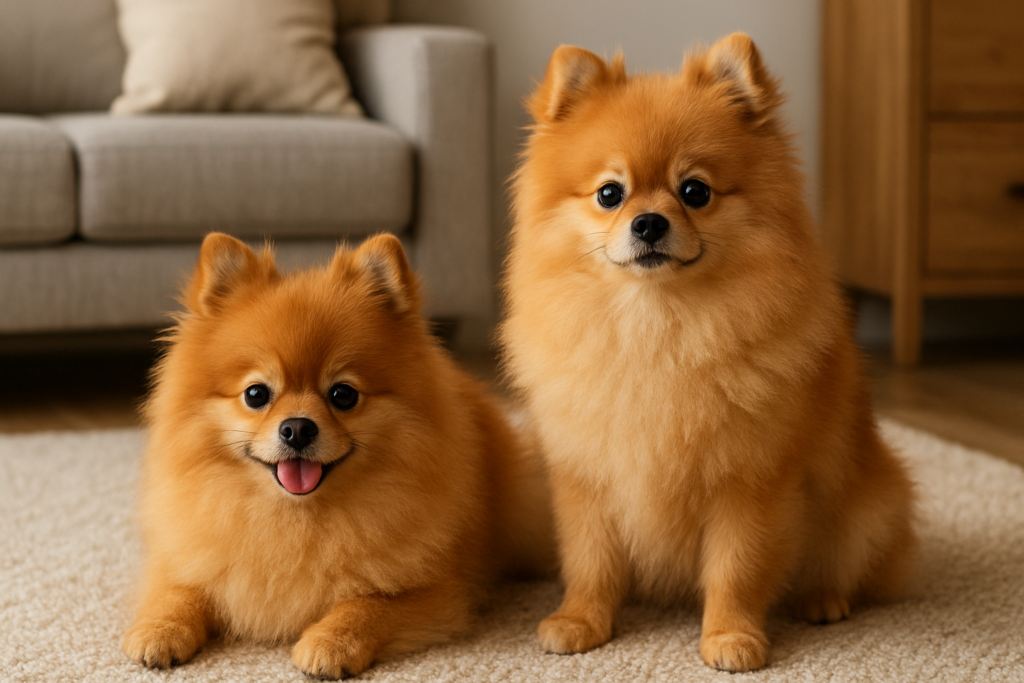
A Legacy of Companionship
While their original purpose involved much more demanding work, today’s Pomeranians excel in their role as companion animals. They’ve maintained their alert nature and intelligence, making them wonderful watchdogs despite their diminutive size. These traits, combined with their affectionate personalities, have helped them become one of the most beloved toy breeds worldwide.
Modern Pomeranians might be surprised to learn about their working dog ancestors, but there’s no doubt they’ve found their true calling as devoted companions. They’ve proven that good things really do come in small packages, bringing joy and entertainment to countless families across the globe.
Typical costs for buying and owning a Pomeranian
- Typical purchase price: £529. (Ranges from £158 to £1,185).
- Expected lifetime cost: £12,476.
- Food costs per year: £220.
